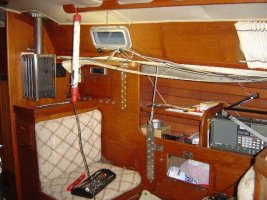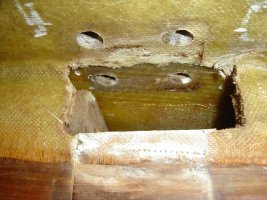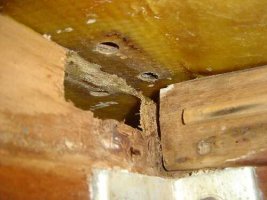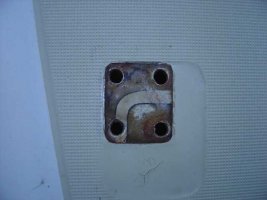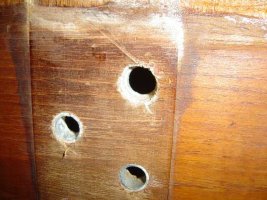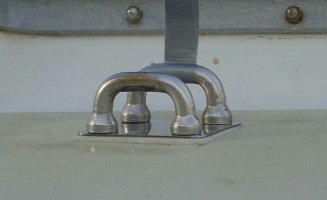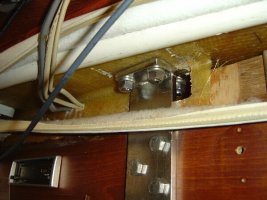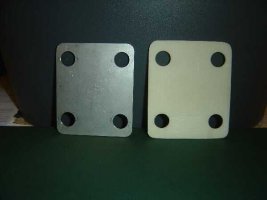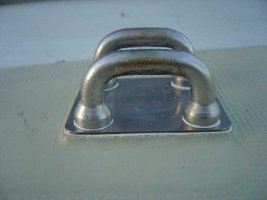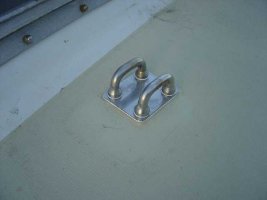I have a 1980 E-38. This year the starboard middle chainplate started leaking. All the other five deck plates for the rig on my boat sit on a little built-up pad on the deck, but not the starboard middle one. Shouldn't there be a little pad for this one also?
On the outside, it looks like it's been repaired before and there is some evidence of an old leak on the interior joinery. (***Edit: The second picture is what I found on the inside this year that made me suspicious.***) I'm getting ready to pull that chainplate apart and fix the deck. I'd like to restore that little pad, if it should be there. I'll probably have core damage and will have to re-build the deck so that the u-bolts will both be squared up again, so I might as well go all the way. Could someone confirm for me that there should be a pad? Thanks.
Oh, and any other advice, tricks of the trade, dire warnings - would be appreciated. I have help from an experienced woodwright and epoxy jockey, and a copy of Don Casey's hull and deck book.
On the outside, it looks like it's been repaired before and there is some evidence of an old leak on the interior joinery. (***Edit: The second picture is what I found on the inside this year that made me suspicious.***) I'm getting ready to pull that chainplate apart and fix the deck. I'd like to restore that little pad, if it should be there. I'll probably have core damage and will have to re-build the deck so that the u-bolts will both be squared up again, so I might as well go all the way. Could someone confirm for me that there should be a pad? Thanks.
Oh, and any other advice, tricks of the trade, dire warnings - would be appreciated. I have help from an experienced woodwright and epoxy jockey, and a copy of Don Casey's hull and deck book.
Attachments
Last edited:

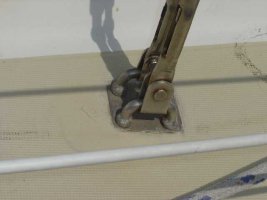
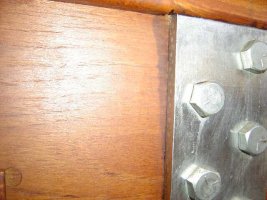
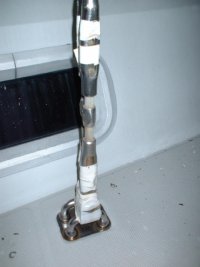
 ).
).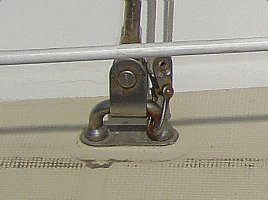
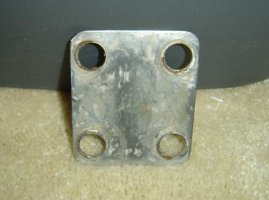
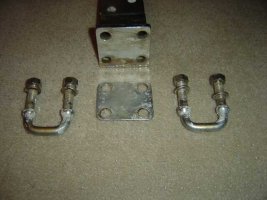
 It's all great reading.
It's all great reading.

